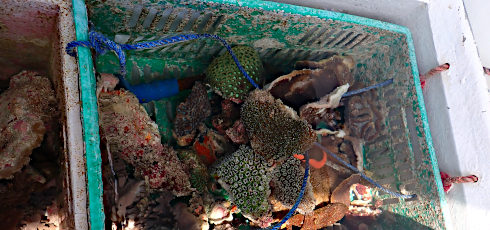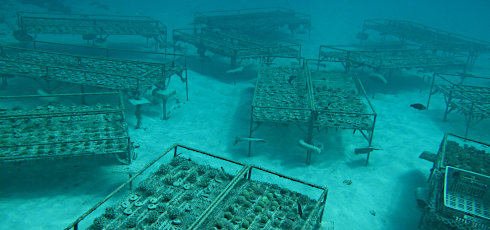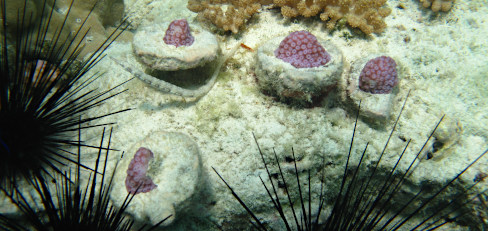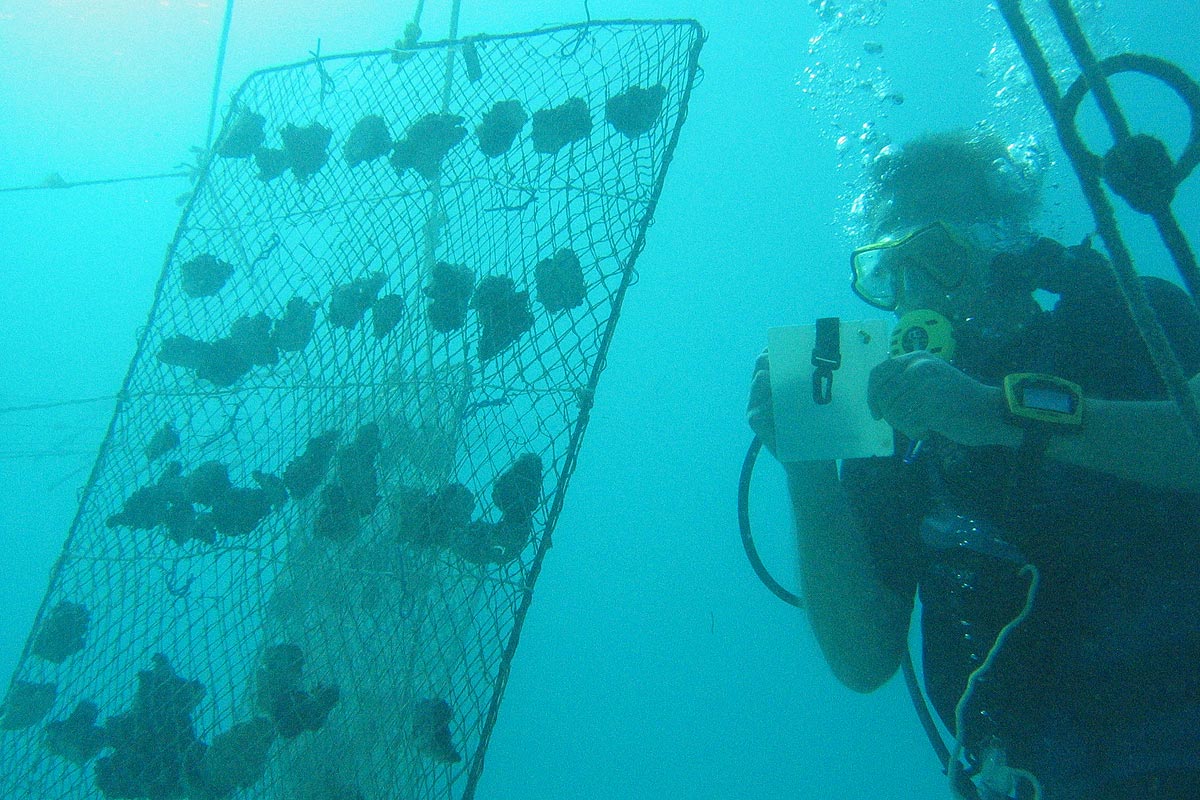A shitstorm shakes the coral farmers
04.06.2019
In spring, a shitstorm went through the Internet. It was rightly criticized that more and more organizations without the necessary know-how reproduce corals by cloning them.
Clones are less resistant than sexually reproduced corals, because they all have the same DNA as the mother coral. With sexual reproduction, biodiversity in nature is preserved and promoted.
In a reforestation project in the Philippines, all 15,000 planted corals died in high seawater temperatures. Normally a few corals always survive such disasters. Those that are more adapted and have the right DNA. But in this case, they were all clones from the same breeding stock. A disaster. No survival without biodiversity!
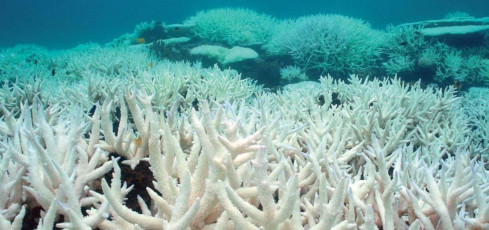
Result of the dreaded coral bleaching due to high water temperatures
Sexual reproduction of corals for reforestation is theoretically feasible, but it is far too complex and expensive for small and medium-sized organizations like marinecultures.org. But there is a good middle way to achieve a diversity of 80-90% of the corals that are reforested. Together with our partner Coral Reef Care we have decided to follow this new way consequently.
What we do in detail:
We exclusively collect so-called 'Corals of Opportunity'. These are fragments or corals that grow on loose stones where they have no further growth possibilities. Small pieces are sufficient. It is important to take care that if two pieces are from the same species they have different DNA. For example, because they were found 100m away from each other. Or because it is a massive or encrusting species which produces hardly any natural clones as it can happen with the branchy corals. A piece breaks off and is carried away with the current. We record the GPS location of every found 'Coral of Opportunity' so that we know exactly where a coral originally came from and that we do not visit the same location more than once.
Corals of Opportunity on the way to the farm
We divide all collected coral pieces per species and genome into a maximum of 20-25 small fragments each. We glue these with some epoxy in a separately marked coral table sector on a small cement plate. So we know exactly that e.g. the greenish Montipora we found at location XY is e.g. on table D in sector 3. Yes, the 20-25 new 'baby corals' all have the same genome (genetic material) - they are also only clones - but by a controlled distribution during transplantation we prevent that several clones are spread out at the same place or reef.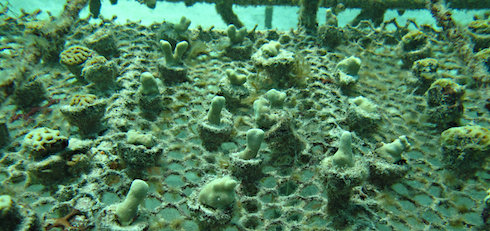
Sector with 20 Montipora’s from reef XY
Now the actual coral farming takes place. The care and maintenance of the small baby corals until they are big enough to transplant them onto damaged or dead reef structures. This takes about 25-40 weeks depending on the species and growth.
We currently have 40 such tables
When transplanting, we never use all 20-25 pieces on the same reef, but only 4-5 pieces which we bring out in a cluster (close together). Because they have an identical genetic make-up they can even grow together. And should 1-2 of the animals die, something will survive. The reef comes back to life and our work was worth it.
A cluster (probably) Astreopora
So all we had to do was adjust the coral farming procedures and give up the broodstock we used to work with. We also don't focus on just a few species as many organizations do. The more different corals we cultivate the better. With the new method we not only preserve biodiversity in reforestation, we actively promote it. 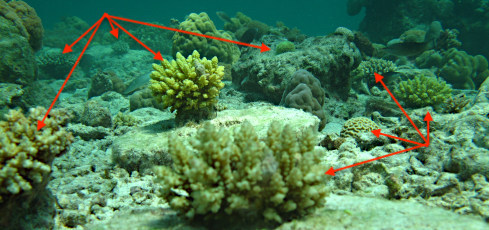
Transplants after 2 years on our house reef
Per year we currently transplant about 8-10'000 corals with only three people. Cross your fingers for us, support us financially and produce as little CO2 as possible so that the sea water temperatures do not rise even further and destroy our engagement! We largely follow the Reforestation Guidelines of Coral Restoration Consortium (CRC) and especially Baums et al. 2019.

